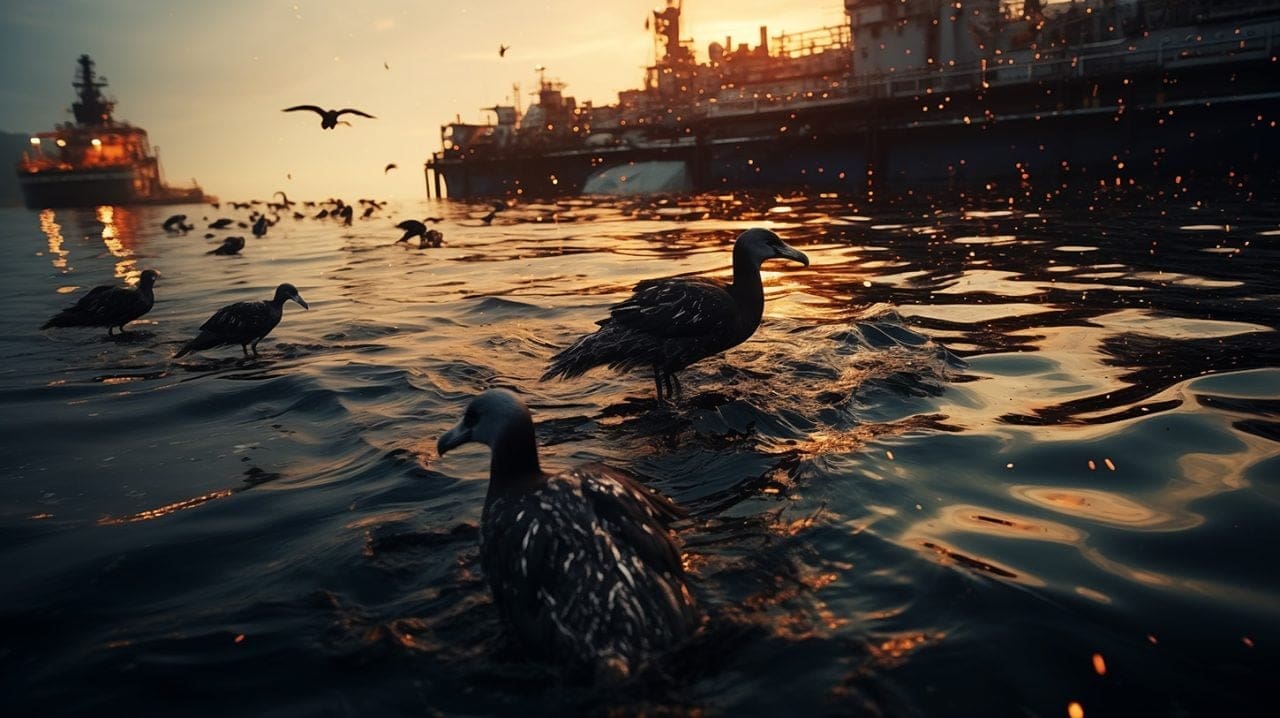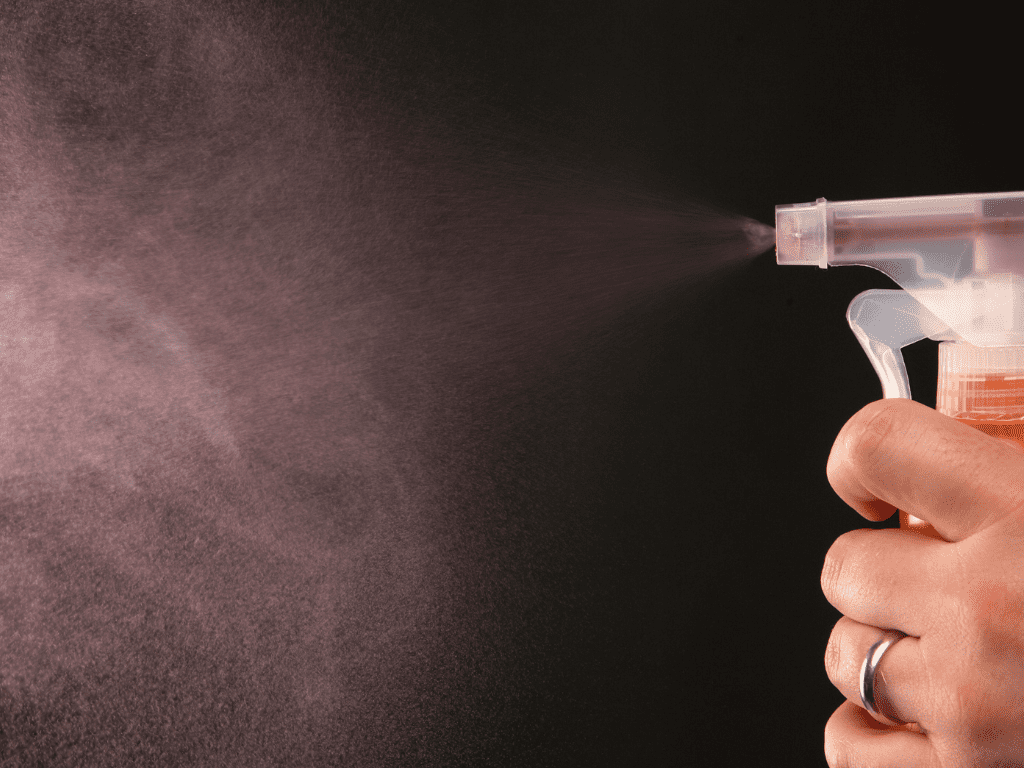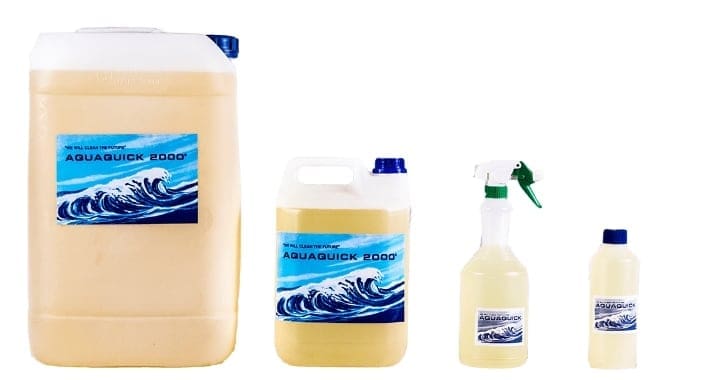I. Introduction
Dispersants are chemical agents crucial in combating the environmental devastation caused by oil spills. By breaking down oil slicks and dispersing them throughout the water column, dispersants mitigate the immediate impact on marine life and ecosystems. However, their use is not without controversy, as concerns about toxicity and long-term effects persist, highlighting the need for careful consideration and ongoing research. In this article, you’ll find out the usage of Dispersants in Oil Spill Clean-Up.
II. Mechanism of Action of Dispersants
A. Chemical Composition and Properties of Dispersants
Dispersants used in oil spill clean-up efforts are typically composed of surfactants, solvents, and other additives. Surfactants are compounds that reduce the surface tension between oil and water, allowing them to mix more readily. Solvents help to dissolve the oil and disperse it throughout the water column, while additives may enhance the effectiveness or stability of the dispersant formulation.
B. Interaction of Dispersants with Oil Molecules
When dispersants are applied to an oil spill, they interact with the oil molecules at the water’s surface. Surfactants in the dispersant penetrate the oil slick and surround individual oil droplets, forming a layer known as a micelle. This micellar structure encapsulates the oil droplets, preventing them from coalescing and forming larger slicks. As a result, the oil is broken down into smaller droplets, which can disperse more easily throughout the water column.
C. Formation of Oil-Dispersant Mixture (Emulsion)
The interaction between dispersants and oil molecules leads to the formation of an oil-dispersant mixture, also known as an emulsion. In this emulsified state, the oil droplets are suspended in the water column, rather than floating on the surface as a cohesive slick. This increases the surface area of the oil, making it more accessible to physical processes such as wave action and turbulence, as well as biological processes such as microbial degradation.
D. Factors Affecting the Effectiveness of Dispersants in oil spill clean-up
Several factors influence the effectiveness of dispersants in oil spill clean-up operations. These include the type of oil spilled, the environmental conditions (such as temperature and water depth), the timing and method of dispersant application, and the presence of natural dispersal agents (such as waves and currents). Additionally, the toxicity and biodegradability of dispersant formulations can vary, impacting their overall environmental impact.

III. Advantages of Dispersants in Oil Spill Clean-Up
A. Rapid Dispersion of Oil Slicks
One of the primary advantages of dispersants in oil spill clean-up efforts is their ability to rapidly disperse oil slicks. By breaking down the oil into smaller droplets and dispersing it throughout the water column, dispersants help to prevent the formation of large, cohesive slicks on the water surface. This reduces the overall surface area covered by the oil, making it easier to manage and containing its spread to a smaller area.
B. Reduction of Surface Oil Exposure to Marine Life
Dispersants play a crucial role in reducing the exposure of marine organisms to surface oil slicks. By dispersing the oil into the water column, dispersants prevent marine organisms such as birds, mammals, and fish from coming into direct contact with the oil. This helps to minimize the physical harm caused by oil coating and ingestion, as well as the toxic effects of oil compounds on marine life.
C. Minimization of Shoreline Contamination
Another advantage of dispersants is their ability to minimize shoreline contamination during oil spill incidents. By preventing the formation of large oil slicks on the water surface, dispersants reduce the likelihood of oil washing ashore and contaminating coastal habitats such as beaches, marshes, and mangroves. This helps to protect sensitive coastal ecosystems and reduce the need for costly and environmentally damaging shoreline clean-up efforts.
D. Facilitation of Microbial Degradation of Oil
Dispersants also facilitate the natural degradation of oil by microbial organisms. By breaking down the oil into smaller droplets and dispersing it throughout the water column, dispersants increase the surface area available for microbial colonization and degradation. This enhances the rate at which oil is biodegraded by naturally occurring bacteria and other microorganisms, ultimately accelerating the recovery of affected ecosystems.
E. Potential for Application in Various Environments and Oil Types
One of the key advantages of dispersants is their versatility and applicability in a wide range of environments and oil types. Dispersants can be used effectively in both offshore and nearshore environments, as well as in different water depths and temperatures. Additionally, dispersants have been shown to be effective in dispersing various types of crude oil and petroleum products, including light and heavy oils, as well as weathered and emulsified oils.

IV. Challenges and Limitations of Dispersant Use
A. Environmental Concerns Regarding Toxicity
Despite their benefits, dispersants also raise environmental concerns, particularly regarding their potential toxicity to marine organisms and ecosystems. Some dispersant formulations contain chemicals that may be harmful to marine life, especially when used in large quantities or under certain environmental conditions. Additionally, the long-term effects of dispersant exposure on marine ecosystems are not fully understood, raising questions about their overall environmental impact.
B. Uncertainty About Long-Term Impacts on Marine Ecosystems
Another challenge associated with dispersant use is the uncertainty surrounding their long-term impacts on marine ecosystems. While dispersants help to mitigate the immediate effects of oil spills by dispersing oil droplets and reducing surface slicks, their long-term effects on marine organisms and ecosystems are less clear. Some studies suggest that dispersants may enhance the bioavailability of oil compounds to marine organisms, potentially increasing their toxicity over time.
C. Effectiveness in Different Environmental Conditions
Dispersants may also vary in effectiveness depending on the environmental conditions in which they are applied. Factors such as water temperature, salinity, and turbulence can influence the dispersal and effectiveness of dispersants in breaking down oil slicks. Additionally, dispersants may be less effective in certain environments, such as shallow coastal waters or areas with strong currents or wave action.
D. Regulatory Issues and Public Perception
The use of dispersants in oil spill clean-up efforts is subject to regulatory oversight and public scrutiny. Regulatory agencies such as the Environmental Protection Agency (EPA) in the United States impose restrictions on the types and quantities of dispersants that can be used, as well as the conditions under which they can be applied. Public perception of dispersant use also plays a role, with concerns about the potential environmental and health impacts of dispersants leading to public opposition in some cases.
E. Interaction with Other Oil Spill Response Techniques
Dispersants may interact with other oil spill response techniques, such as containment and skimming, complicating response efforts. For example, dispersants applied to an oil slick may interfere with the effectiveness of skimming operations by breaking down the oil into smaller droplets that are more difficult to recover. Similarly, the use of dispersants in combination with other response techniques may raise additional environmental and logistical challenges.

V. Case Studies of Dispersant Use in Oil Spills
A. Deepwater Horizon Oil Spill (2010)
The Deepwater Horizon oil spill in the Gulf of Mexico was one of the largest and most environmentally devastating oil spills in history. Following the explosion and sinking of the Deepwater Horizon drilling rig, millions of barrels of crude oil were released into the Gulf over a period of several months. Dispersants were used extensively during the response efforts to break down the oil and mitigate its environmental impact.
- Overview of the Spill and Response Efforts: The Deepwater Horizon spill began on April 20, 2010, and continued until the well was capped on July 15, 2010. The response effort involved the deployment of dispersants both at the sea surface and at the wellhead, as well as other techniques such as containment booms and controlled burns.
- Utilization of Dispersants and Their Effectiveness: Dispersants were applied both aerially and via subsea injection to break up the oil slicks and facilitate their dispersion into the water column. While the use of dispersants helped to prevent the formation of large surface slicks, concerns were raised about their potential environmental impact, particularly on deep-sea ecosystems.
- Environmental Consequences and Lessons Learned: The Deepwater Horizon spill had profound environmental consequences, impacting marine life, coastal habitats, and local economies. The extensive use of dispersants raised questions about their long-term effects on marine ecosystems and human health. Lessons learned from the Deepwater Horizon spill have led to improvements in dispersant technology and response strategies.
B. Exxon Valdez Oil Spill (1989)
The Exxon Valdez oil spill off the coast of Alaska in 1989 was another major environmental disaster that highlighted the challenges of oil spill response and clean-up efforts. Dispersants were among the techniques used to address the spill, although their effectiveness and environmental impact were subject to debate.
- Application of Dispersants and Outcomes: Dispersants were applied to the oil slicks resulting from the Exxon Valdez spill in an attempt to break down the oil and facilitate its dispersion. However, the effectiveness of dispersants in this context was limited, partly due to the cold water temperatures and the heavy viscosity of the crude oil.
- Comparison with Modern Dispersant Technologies and Practices: The use of dispersants during the Exxon Valdez spill highlighted the need for improved dispersant technologies and response strategies. Subsequent research and development have led to advancements in dispersant formulations, application methods, and monitoring techniques, enhancing their effectiveness and reducing their environmental impact.
C. Other Notable Oil Spill Incidents and Dispersant Usage
In addition to the Deepwater Horizon and Exxon Valdez spills, dispersants have been used in response to numerous other oil spill incidents around the world. These include spills resulting from tanker accidents, pipeline ruptures, offshore drilling accidents, and natural disasters. Each spill presents unique challenges and considerations for dispersant use, highlighting the importance of ongoing research and preparedness in oil spill response efforts.
VI. Research and Development in Dispersant Technology
A. Improvement of Dispersant Formulations for Enhanced Effectiveness and Reduced Toxicity
Ongoing research and development efforts are focused on improving dispersant formulations to enhance their effectiveness in oil spill clean-up while minimizing their environmental impact. This includes developing dispersants with optimized surfactant compositions and properties to improve oil dispersion and biodegradability. Additionally, efforts are underway to reduce the toxicity of dispersant formulations by using less harmful ingredients and exploring alternative dispersant materials.
B. Exploration of Alternative Dispersant Materials and Methods, Including AquaQuick
In recent years, there has been growing interest in exploring alternative dispersant materials and methods to complement traditional dispersant technologies. One such alternative is AquaQuick, a dispersant solution that offers unique properties and potential benefits for oil spill clean-up efforts. AquaQuick utilizes environmentally friendly ingredients and innovative formulations to achieve effective oil dispersion while minimizing toxicity and environmental impact.
- Introduction to AquaQuick as a Dispersant Solution: AquaQuick is a proprietary dispersant solution developed specifically for oil spill clean-up applications. It is composed of biodegradable surfactants and solvents that are designed to rapidly break down oil slicks and disperse them throughout the water column. AquaQuick is formulated to be highly effective in a wide range of environmental conditions, making it a versatile and reliable tool for oil spill response efforts.
- Comparison of AquaQuick with Traditional Dispersants: Compared to traditional dispersants, AquaQuick offers several distinct advantages, including reduced toxicity, enhanced biodegradability, and improved effectiveness in cold water and rough sea conditions. AquaQuick’s innovative formulation allows for rapid oil dispersion without the need for large quantities of chemicals, making it a cost-effective and environmentally sustainable solution for oil spill clean-up.
- Research Findings on the Effectiveness and Environmental Impact of AquaQuick: Research studies have demonstrated the effectiveness of AquaQuick in dispersing oil slicks and minimizing the environmental impact of oil spills. AquaQuick has been shown to reduce surface oil exposure to marine life, minimize shoreline contamination, and facilitate the natural degradation of oil by microbial organisms. Additionally, AquaQuick’s low toxicity and biodegradability make it a safer and more environmentally friendly alternative to traditional dispersants.

C. Integration of Dispersant Application with Advanced Monitoring and Assessment Techniques
Advancements in dispersant technology are being integrated with advanced monitoring and assessment techniques to improve the effectiveness and environmental safety of dispersant application. This includes the development of real-time monitoring systems to track the dispersion and fate of dispersed oil in the water column, as well as the use of remote sensing technologies to assess the impact of dispersant application on marine ecosystems.
D. Collaborative Efforts Between Industry, Academia, and Government Agencies in Dispersant Research
Collaborative efforts between industry, academia, and government agencies are essential for advancing dispersant research and development. By pooling resources and expertise, stakeholders can work together to address key challenges and develop innovative solutions for oil spill clean-up. These collaborations facilitate the sharing of knowledge, data, and best practices, leading to more effective and environmentally sustainable dispersant technologies and practices.
Conclusion
In conclusion, dispersants play a vital role in oil spill clean-up efforts, offering rapid and effective means to mitigate environmental damage. While their use presents challenges and uncertainties, advancements in technology and collaboration among stakeholders promise to improve their effectiveness and minimize their environmental impact in the future. With responsible use and continued innovation, dispersants, including emerging solutions like AquaQuick, can contribute significantly to enhancing oil spill response capabilities worldwide.














